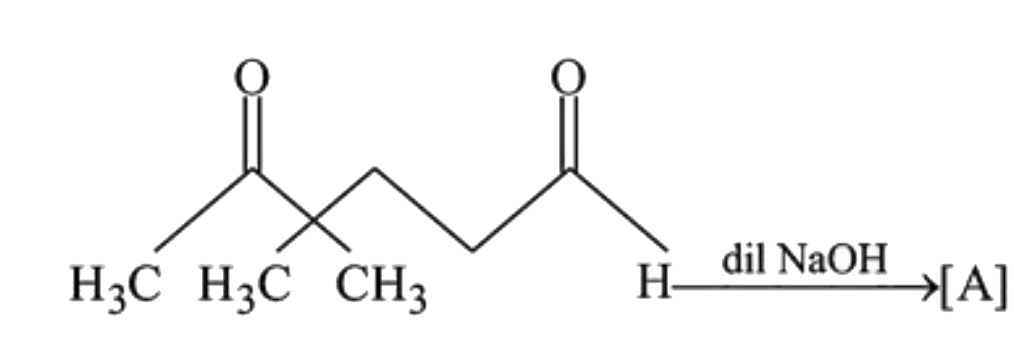In the manufacture of sodium carbonate, following reactions are involved:
(A)Δ−−→(B)+CO2
(B)+H2O→(C)+NH4Cl→(D)+H2O−−−−→ESolution
(E)+CO2→(F)
(F)+NaCl→(G)Heat−−→Na2CO3+CO2+H2O
(D) is a gas which is soluble in H2O
(C ) is
Calcium hydroxide
Sodium hydroxide
Calcium oxide
None of these
The correct Answer is:A
To solve the question regarding the manufacture of sodium carbonate and identify the compound C, we will analyze the given reactions step by step.
1. Identify Compound A:
- The process of manufacturing sodium carbonate involves starting with calcium carbonate (CaCO3).
- Therefore, A = CaCO3.
2. Reaction of A:
- When calcium carbonate is heated, it decomposes into calcium oxide (CaO) and carbon dioxide (CO2).
- This can be represented as:
CaCO3Δ→CaO+CO2
- Thus, B = CaO.
3. Reaction of B with Water:
- Calcium oxide reacts with water to form calcium hydroxide (Ca(OH)2).
- This can be represented as:
CaO+H2O→Ca(OH)2
- Therefore, C = Ca(OH)2.
4. Reaction of C with Ammonium Chloride (NH4Cl):
- Calcium hydroxide reacts with ammonium chloride to produce ammonia (NH3) and calcium chloride (CaCl2).
- This can be represented as:
Ca(OH)2+2NH4Cl→2NH3+CaCl2+2H2O
- Here, D = NH3 (ammonia), which is a gas that is soluble in water.
5. Formation of E:
- Ammonia (D) reacts with water to form ammonium hydroxide (NH4OH).
- This can be represented as:
NH3+H2O→NH4OH
- Therefore, E = NH4OH.
6. Reaction of E with Carbon Dioxide:
- Ammonium hydroxide reacts with carbon dioxide to form ammonium bicarbonate (NH4HCO3).
- This can be represented as:
NH4OH+CO2→NH4HCO3
- Thus, F = NH4HCO3.
7. Reaction of F with Sodium Chloride (NaCl):
- Ammonium bicarbonate reacts with sodium chloride to produce sodium bicarbonate (NaHCO3) and ammonium chloride.
- This can be represented as:
NH4HCO3+NaCl→NaHCO3+NH4Cl
- Here, G = NaHCO3.
8. Final Reaction:
- Upon heating sodium bicarbonate, it decomposes to form sodium carbonate, carbon dioxide, and water.
- This can be represented as:
NaHCO3Heat→Na2CO3+CO2+H2O
Conclusion:
- The compound C is Calcium Hydroxide (Ca(OH)2).
- The process of manufacturing sodium carbonate involves starting with calcium carbonate (CaCO3).
- Therefore, A = CaCO3.
- When calcium carbonate is heated, it decomposes into calcium oxide (CaO) and carbon dioxide (CO2).
- This can be represented as:
CaCO3Δ→CaO+CO2
- Thus, B = CaO.
- Calcium oxide reacts with water to form calcium hydroxide (Ca(OH)2).
- This can be represented as:
CaO+H2O→Ca(OH)2
- Therefore, C = Ca(OH)2.
- Calcium hydroxide reacts with ammonium chloride to produce ammonia (NH3) and calcium chloride (CaCl2).
- This can be represented as:
Ca(OH)2+2NH4Cl→2NH3+CaCl2+2H2O
- Here, D = NH3 (ammonia), which is a gas that is soluble in water.
- Ammonia (D) reacts with water to form ammonium hydroxide (NH4OH).
- This can be represented as:
NH3+H2O→NH4OH
- Therefore, E = NH4OH.
- Ammonium hydroxide reacts with carbon dioxide to form ammonium bicarbonate (NH4HCO3).
- This can be represented as:
NH4OH+CO2→NH4HCO3
- Thus, F = NH4HCO3.
- Ammonium bicarbonate reacts with sodium chloride to produce sodium bicarbonate (NaHCO3) and ammonium chloride.
- This can be represented as:
NH4HCO3+NaCl→NaHCO3+NH4Cl
- Here, G = NaHCO3.
- Upon heating sodium bicarbonate, it decomposes to form sodium carbonate, carbon dioxide, and water.
- This can be represented as:
NaHCO3Heat→Na2CO3+CO2+H2O
- The compound C is Calcium Hydroxide (Ca(OH)2).
Topper's Solved these Questions
- S-BLOCK GROUP 1 - ALKALI METALSBOOK - CENGAGE CHEMISTRY ENGLISHCHAPTER - S-BLOCK GROUP 1 - ALKALI METALSEXERCISE - Exercises Multiple Correct
34 Videos
- S-BLOCK GROUP 1 - ALKALI METALSBOOK - CENGAGE CHEMISTRY ENGLISHCHAPTER - S-BLOCK GROUP 1 - ALKALI METALSEXERCISE - Exercises Single Correct
100 Videos
- S-BLOCK GROUP 1 - ALKALI METALSBOOK - CENGAGE CHEMISTRY ENGLISHCHAPTER - S-BLOCK GROUP 1 - ALKALI METALSEXERCISE - Ex 4.1 (Objective)
17 Videos
- REDOX REACTIONSBOOK - CENGAGE CHEMISTRY ENGLISHCHAPTER - REDOX REACTIONSEXERCISE - Archives (Integers)
1 Videos
- S-BLOCK GROUP 2 - ALKALINE EARTH METALSBOOK - CENGAGE CHEMISTRY ENGLISHCHAPTER - S-BLOCK GROUP 2 - ALKALINE EARTH METALSEXERCISE - Ex 5.1 Objective
2 Videos
Similar Questions
In the manufacture of sodium carbonate, following reactions are involved:
(A)Δ−−→(B)+CO2
(B)+H2O→(C)+NH4Cl→(D)+H2O−−−−→ESolution
(E)+CO2→(F)
(F)+NaCl→(G)Heat−−→Na2CO3+CO2+H2O
(D) is a gas which is soluble in H2O
(E ) and (F) are
View SolutionIn the manufacture of sodium carbonate, following reactions are involved:
(A)Δ−−→(B)+CO2
(B)+H2O→(C)+NH4Cl→(D)+H2O−−−−→ESolution
(E)+CO2→(F)
(F)+NaCl→(G)Heat−−→Na2CO3+CO2+H2O
(D) is a gas which is soluble in H2O
The name of the process is
View SolutionAΔ−−→B (oxide) +CO2
B+H2O→C
C+CO2→A (milky)
C+NH4CIΔ−−→D (gas)
D+H2O+CO2→E
E+NaCI→F
FΔ−−→Na2CO3+CO2+H2O
D,E and F are:
View SolutionAΔ−−→B (oxide) +CO2
B+H2O→C
C+CO2→A (milky)
C+NH4CIΔ−−→D (gas)
D+H2O+CO2→E
E+NaCI→F
FΔ−−→Na2CO3+CO2+H2O
B and C are:
View SolutionAΔ−−→B (oxide) +CO2
B+H2O→C
C+CO2→A (milky)
C+NH4CIΔ−−→D (gas)
D+H2O+CO2→E
E+NaCI→F
FΔ−−→Na2CO3+CO2+H2O
A is:
View SolutionAΔ−−→B (oxide) +CO2
B+H2O→C
C+CO2→A (milky)
C+NH4CIΔ−−→D (gas)
D+H2O+CO2→E
E+NaCI→F
FΔ−−→Na2CO3+CO2+H2O
Name of the process is:
View Solution Hdil NaOH−−−−→[A]H2O+−−−→Δ[B]
Hdil NaOH−−−−→[A]H2O+−−−→Δ[B]
View SolutionComplete the following reactions
(a)XeF4+H2O→
(b )XeF6+H2→
(c)XeF6+H2O→
(d)XeF6+NH3→
View SolutionIdentify (A) to (G) in the following scheme and name the process.
CaCO3Δ−−→(A)+(B)gas,(A)+H2O→(C)
(C)+B→CaCO3+H2O(D)+(C)Δ−−→(E)gas
(E)+H2O+(B)→(F),NaCI+(F)→(G)+(D)
(G)Δ−−→Na3CO3+H2O+(B)
View SolutionSiCl4H2O−−→(A)Heat−−→(B)Na2CO3−−−−→Heat(C),
The compound (C ) is
View Solution
